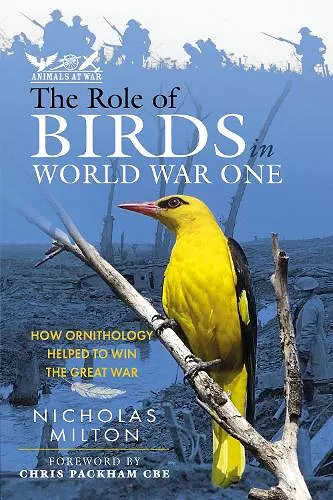The Role of Birds in World War One
How Ornithology Helped to Win the Great War
Format:Hardback
Publisher:Pen & Sword Books Ltd
Published:3rd Nov '22
Should be back in stock very soon

The British Expeditionary Force sent to France in the late summer of 1914 has been referred to as the 'Best British Army Ever Sent to War' as it was one of the most highly trained and disciplined forces in the world. It was also the 'Best Birdwatching Army Ever Sent to War' for among its ranks were hundreds of both amateur and professional ornithologists. When not fighting, many soldiers turned to birdwatching as a way of whiling away the long hours spent on guard duty or watching over 'no man's land'. The list of birds seen by them serving in all the theatres of war was truly impressive, ranging from the common like sparrows, skylarks and swallows to the exotic like golden orioles, hoopoes and bee-eaters. It was not just at the battle front that birds found themselves in the firing line but also on the home front. For the Foreign Secretary, Edward Grey, who worked tirelessly to preserve peace but ended up convincing the House of Commons to go to war, birds were his hinterland. But as well as declaring war on Germany on 4 August 1914, the government also declared war on the humble house sparrow, farmers falsely accusing it of destroying Britain's dwindling wheat and oat supplies. From the outset the slaughter was opposed by the Royal Society for the Protection of Birds who eventually triumphed over the Board of Agriculture, becoming the powerful voice for conservation we know today. When the guns finally fell silent on 11 November 1918 and the Great War came to an ignoble end, a generation of birdwatchers lay dead. Among them were scientists, researchers, lords, librarians, artists, authors, professors, poets, lawyers, surgeons and explorers, many young men with great promise. Had they lived, the science of ornithology and the hobby of birdwatching would have undoubtedly been much the richer. In commemoration of their sacrifice a selection of them is included in the Ornithological Roll of Honour at the back of this book.
ISBN: 9781399070560
Dimensions: unknown
Weight: unknown
224 pages